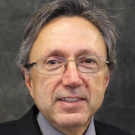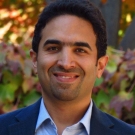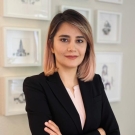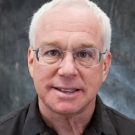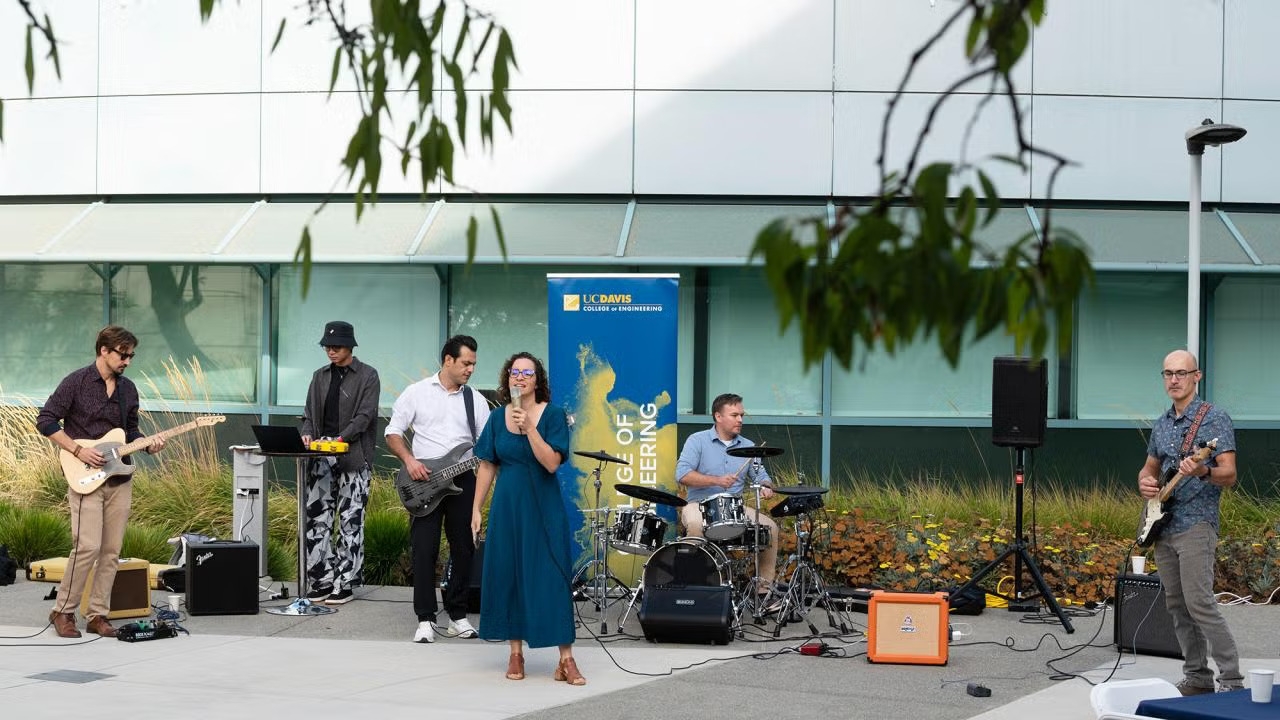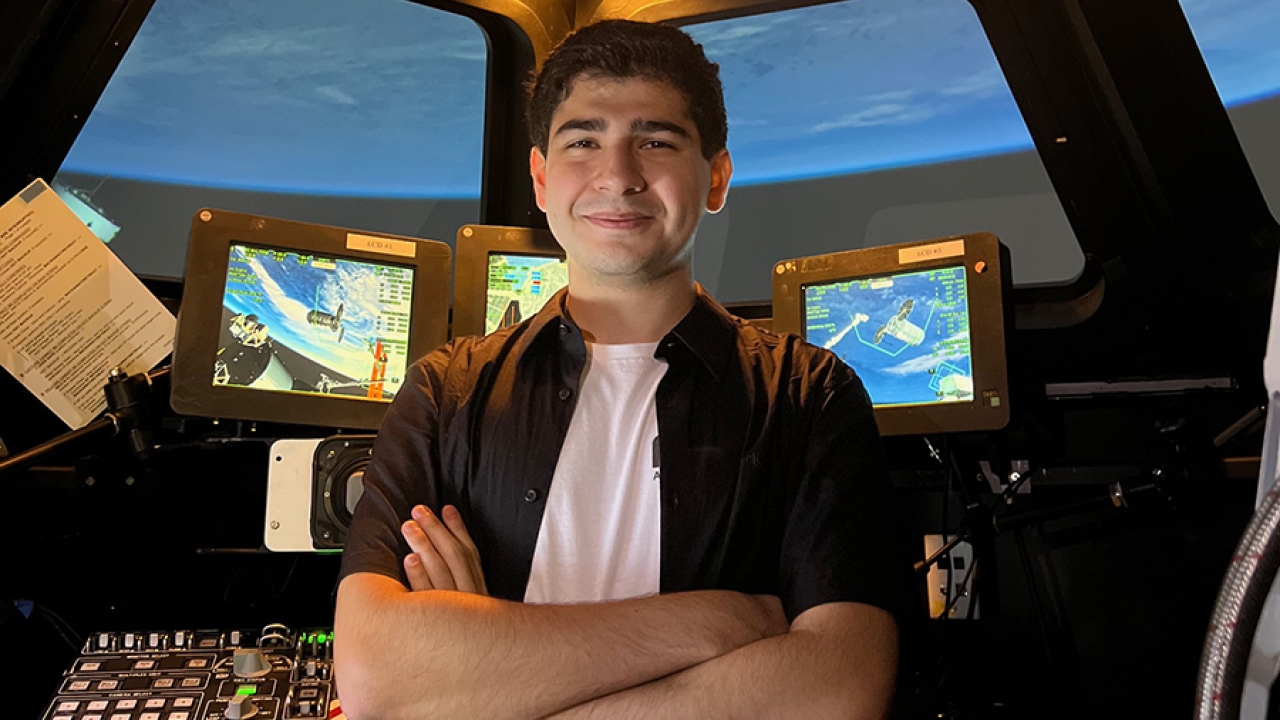New Generation of Co-Directors Lead Research Center in Transportation Solutions
After more than 30 years leading the Advanced Highway Maintenance and Construction Technology Research Center, or AHMCT, at the University of California, Davis, Distinguished Professor of Mechanical and Aerospace Engineering Bahram Ravani will step away from his role as director. Assistant Professors of Mechanical and Aerospace Engineering Shima Nazari and Iman Soltani, both principal investigators of the center, will step in as co-directors.
“Now is the right time,” Ravani said. “In addition to their general skills in mechanical engineering, Shima and Iman have special interests and expertise in areas that could play a big role in the next five to 10 years with agencies like Caltrans.”
AHMCT was established in 1991 by Ravani and Distinguished Professor Emeritus of Mechanical and Aerospace Engineering Steven Velinsky, who served as co-directors until Velinsky’s retirement in 2019. Ty Lasky, a research engineer and UC Davis alum, joined Ravani as co-director until his retirement in 2024, after which Ravani continued as the sole director of the center.


The center was created to work primarily with Caltrans, as well as other mission-oriented agencies, including the Defense Advanced Research Projects Agency, or DARPA, and the Federal Highway Administration, to research and implement enhancements and technologies that make these entities safer and more efficient.

Past projects include integrating sensor technology, algorithms, displays, and system design into snowplows for enhanced safety during winter maintenance; a small, remote-controlled boat equipped with sensing technology to navigate into unsafe marine areas (e.g., under low bridges or shallow areas) to assess debris; and an automated pothole patching machine.
With the advent of new technological advancements, such as deep learning methods and generative AI techniques, and the push for zero-emission and hybrid vehicles, Ravani saw Nazari and Soltani as the best candidates to guide AHMCT into the next era.
Next-Generation Leadership
Nazari, whose research focuses on control systems, automation and vehicle electrification, aims to help Caltrans in its research priorities by automating operations, particularly ones that put Caltrans workers in hazardous situations.

She will also lead electrification efforts by working with Caltrans to develop their infrastructure that supports electric equipment and evaluating zero-emission vehicles for their specific needs, to comply with California’s mandate for 100% zero emissions from medium and heavy-duty on-road vehicles by 2045.
With his focus on robotics, AI and machine learning, Soltani looks forward to implementing the latest advancements into the automation work AHMCT is already doing. For example, using machine learning to identify unsafe drivers by analyzing driving patterns or extracting measurements from existing digital data on infrastructure, rather than sending a surveyor to take measurements.
“We have a very futuristic view for the center,” Nazari said.
One of the highest priorities for both Nazari and Soltani is to build on the relationship between AHMCT and Caltrans that Ravani has been instrumental in cultivating over the past 30 years.

“The beauty of state agencies like Caltrans joining forces with UC Davis, a state university and R1 research institute, is that you see that the result truly solves a very complex problem,” Soltani said.
He points to a recent instance when Caltrans called on AHMCT to take emergency measurements of an old bridge using a system that AHMCT developed for this purpose. The center staff went to the bridge — on short notice and on a weekend, Soltani adds — and Caltrans determined that the bridge needed to be closed immediately, saving money and likely saving lives.
“We are hoping to continue this kind of positive impact,” Soltani said. “It's very good for us, because our students, our postdocs, our staff all learn many new things on every project, and Caltrans gets this expertise that we have. It’s a win-win situation.”
Built to Last
For his part, Ravani is ready to let others continue paving AHMCT’s path.
He has worked hard on behalf of AHMCT for three decades, along with former co-directors Velinsky and Lasky. Not the least of AHMCT's accomplishments during his term as co-director was the construction of the Advanced Transportation Infrastructure Research Center, or ATIRC, in collaboration with the University of California Pavement Research Center, led by Professor of Civil and Environmental Engineering John Harvey. ATIRC, which houses both the Pavement Research Center and AHMCT facilities, includes a 20,000-square-foot building on 7.5 acres a couple of miles west of main campus and comprises various laboratories, a machine shop, welding shop and vehicle integration tools, as well as two vehicle test tracks.

He believes, though, that the center and his legacy are in very capable hands.
“Through AHMCT, we have been able to develop a unique facility at UC Davis,” he said. “And it’s going to remain for many years.”
And while Nazari and Soltani are ready for the new demands of the role (they have been shadowing Ravani for several years), they also hope Ravani will take his time in leaving.
“Bahram has magical instincts,” Soltani said. “No matter how well we are aware of the process, when issues come up, Bahram always makes it look so easy. Now those responsibilities are ours.”
“We both have very big shoes to fill,” Nazari adds. “Professor Ravani did a great job building the center, including establishing connections and trust with Caltrans and facilitating research with them. I'm excited about the new role, but it comes with a big responsibility.”

